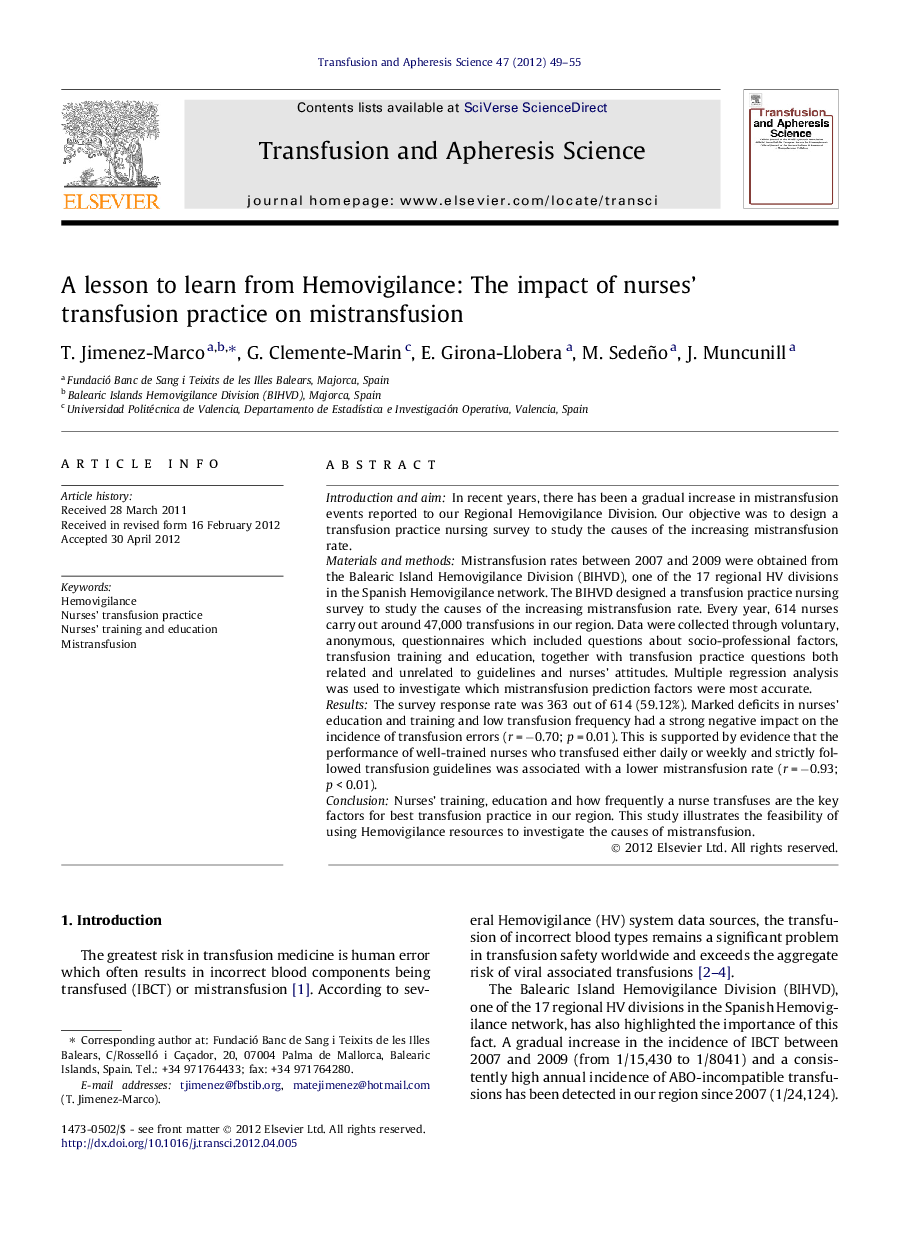| کد مقاله | کد نشریه | سال انتشار | مقاله انگلیسی | نسخه تمام متن |
|---|---|---|---|---|
| 3335252 | 1213526 | 2012 | 7 صفحه PDF | دانلود رایگان |

Introduction and aimIn recent years, there has been a gradual increase in mistransfusion events reported to our Regional Hemovigilance Division. Our objective was to design a transfusion practice nursing survey to study the causes of the increasing mistransfusion rate.Materials and methodsMistransfusion rates between 2007 and 2009 were obtained from the Balearic Island Hemovigilance Division (BIHVD), one of the 17 regional HV divisions in the Spanish Hemovigilance network. The BIHVD designed a transfusion practice nursing survey to study the causes of the increasing mistransfusion rate. Every year, 614 nurses carry out around 47,000 transfusions in our region. Data were collected through voluntary, anonymous, questionnaires which included questions about socio-professional factors, transfusion training and education, together with transfusion practice questions both related and unrelated to guidelines and nurses’ attitudes. Multiple regression analysis was used to investigate which mistransfusion prediction factors were most accurate.ResultsThe survey response rate was 363 out of 614 (59.12%). Marked deficits in nurses’ education and training and low transfusion frequency had a strong negative impact on the incidence of transfusion errors (r = −0.70; p = 0.01). This is supported by evidence that the performance of well-trained nurses who transfused either daily or weekly and strictly followed transfusion guidelines was associated with a lower mistransfusion rate (r = −0.93; p < 0.01).ConclusionNurses’ training, education and how frequently a nurse transfuses are the key factors for best transfusion practice in our region. This study illustrates the feasibility of using Hemovigilance resources to investigate the causes of mistransfusion.
Journal: Transfusion and Apheresis Science - Volume 47, Issue 1, August 2012, Pages 49–55